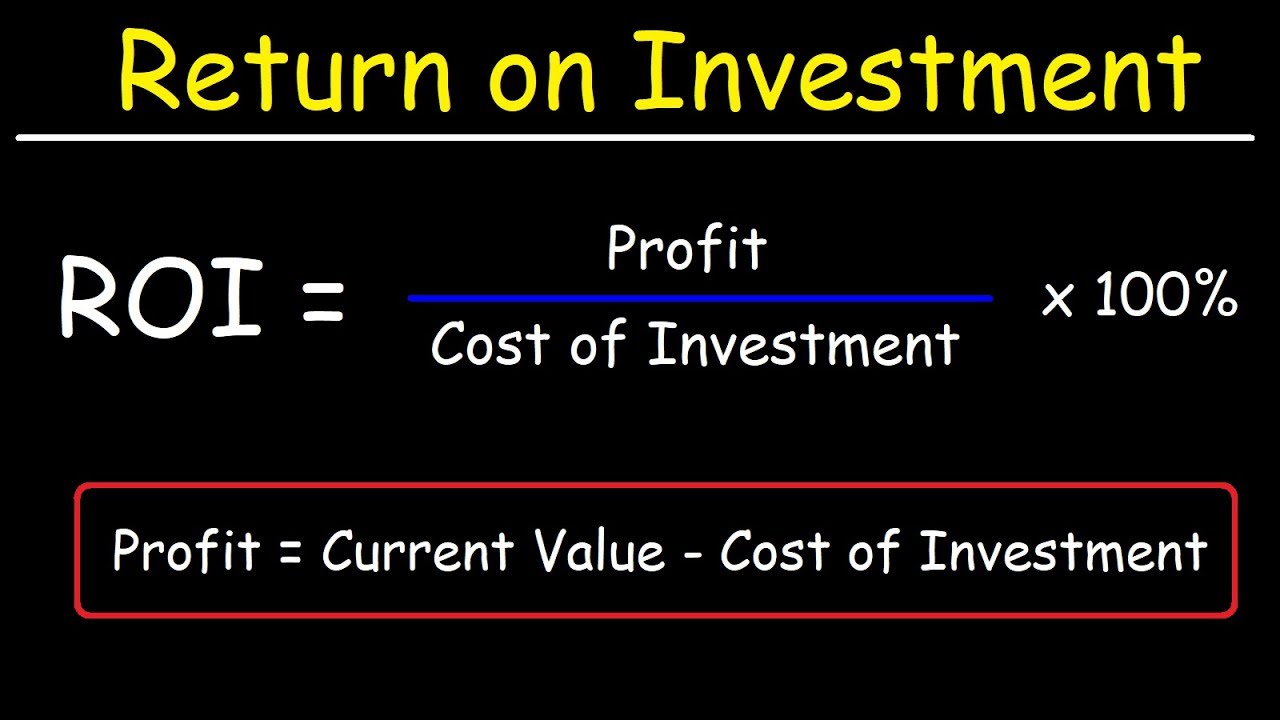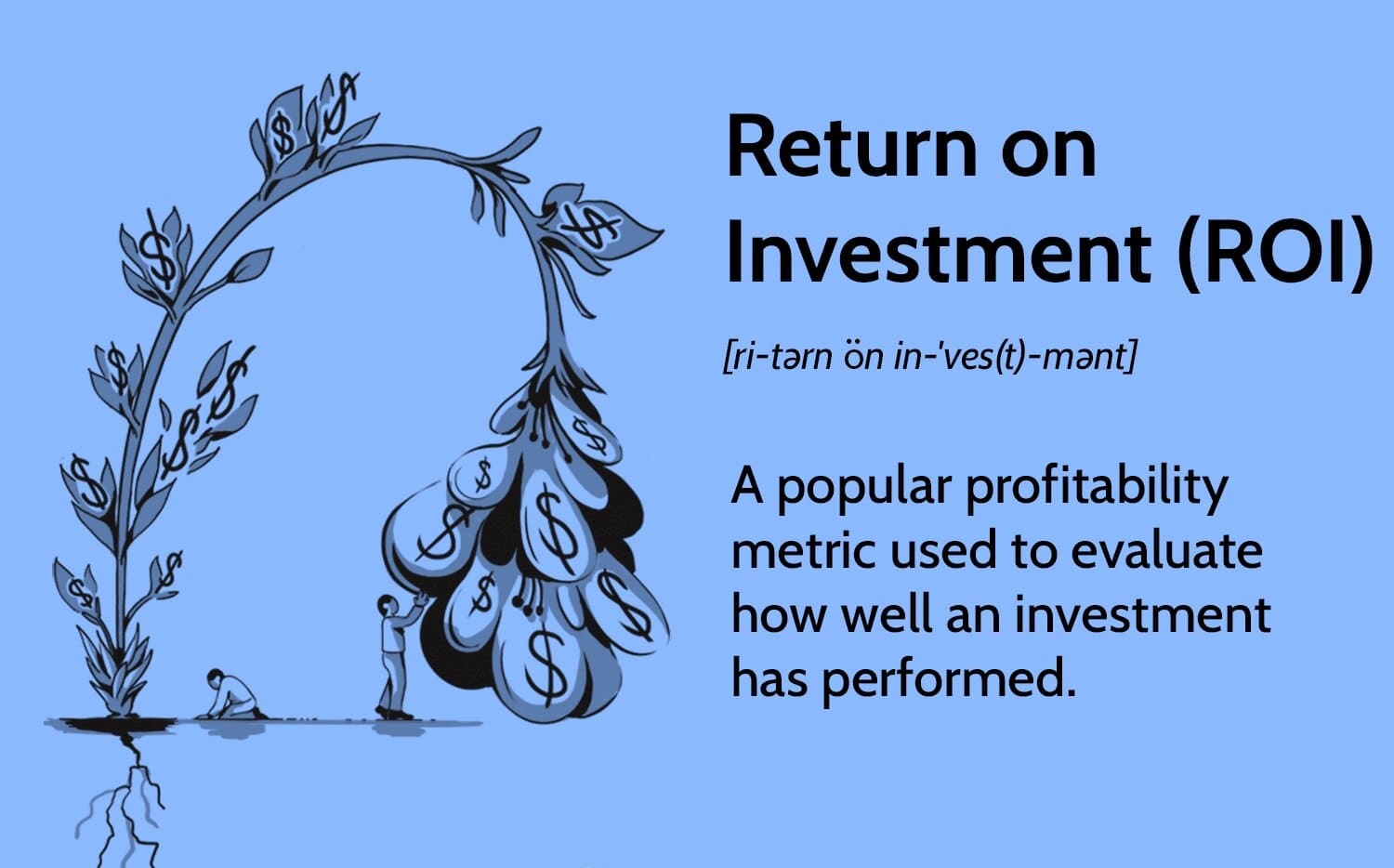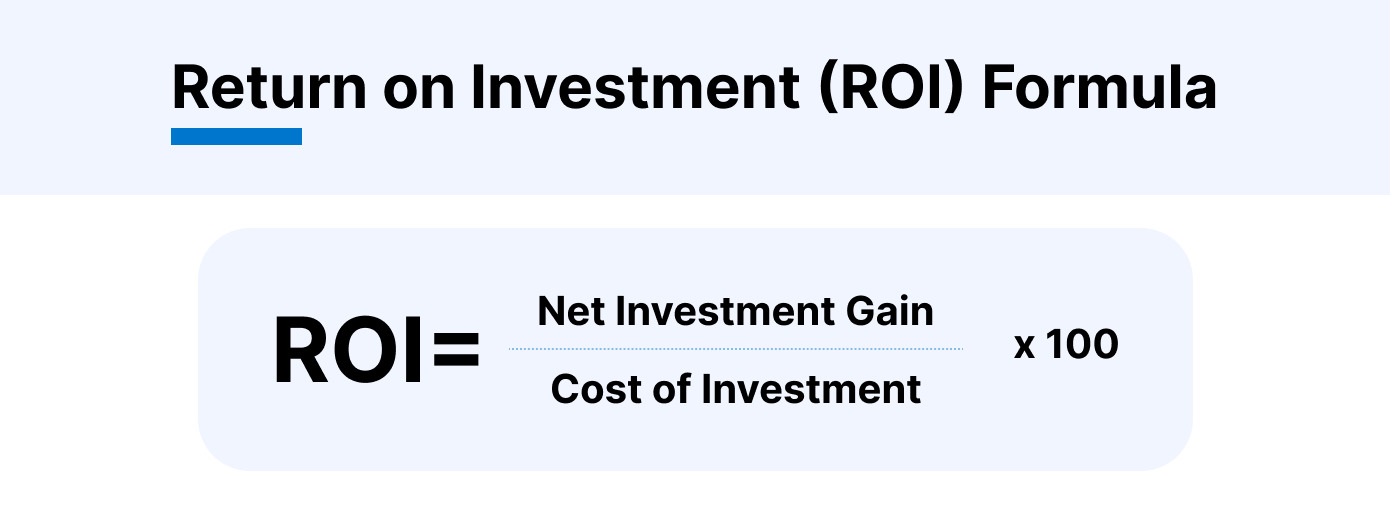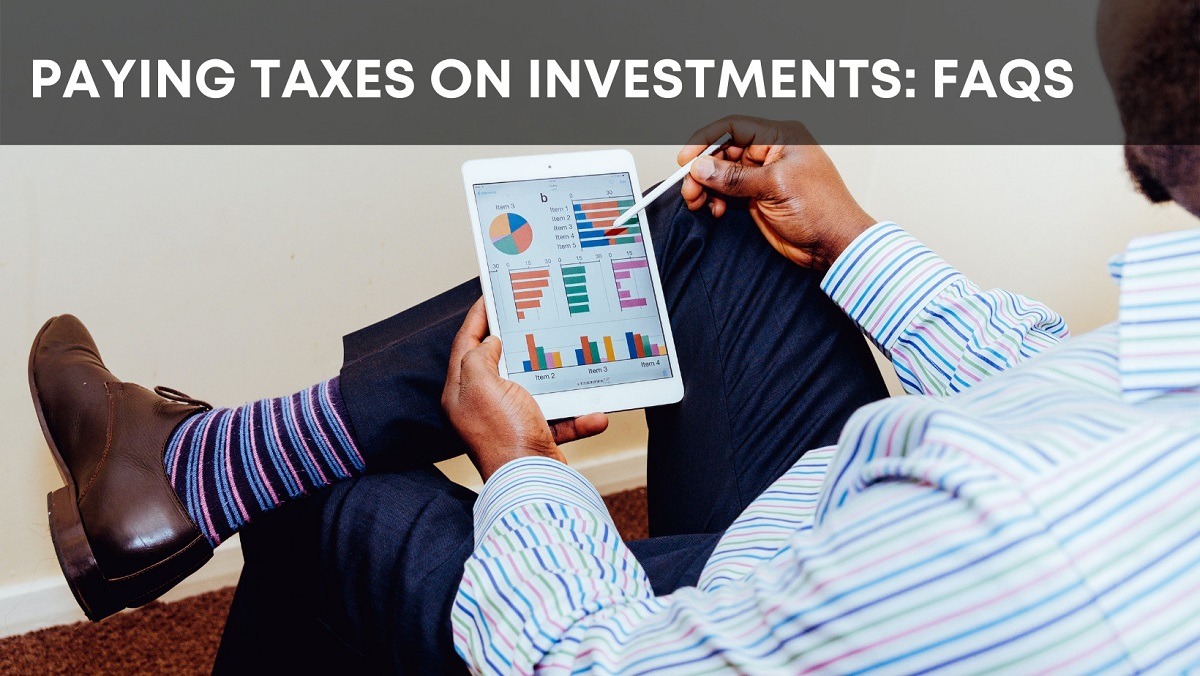Introduction
Welcome to our comprehensive guide on how to calculate return on investment (ROI) for real estate investments. Whether you’re a seasoned investor or just starting out in the world of real estate, understanding ROI is crucial for making informed decisions and maximizing your investment potential.
ROI is a financial metric that measures the profitability of an investment by comparing the gain or loss generated relative to the amount of money invested. In the realm of real estate, ROI provides valuable insights into the potential return you can expect from a property or portfolio.
Real estate investments offer unique advantages compared to other investment options. Not only do they allow you to generate passive income through rental properties, but they also offer the potential for long-term appreciation and tax benefits.
However, investing in real estate comes with its own set of challenges and risks. Without a clear understanding of ROI, you may end up making poor investment decisions or missing out on lucrative opportunities.
In this guide, we will walk you through the step-by-step process of calculating ROI for real estate investments. We will explain the formula, highlight the different components of ROI, discuss factors that can affect ROI, and provide tips for maximizing your returns.
Whether you’re considering purchasing a rental property, exploring fix-and-flip opportunities, or considering other real estate ventures, mastering the art of calculating ROI is essential for evaluating the profitability of each investment and ensuring that your financial goals are met.
So let’s dive in and learn how to crunch the numbers to determine the return on investment for real estate investments!
What is Return on Investment (ROI)?
Return on Investment, commonly referred to as ROI, is a financial metric that measures the profitability of an investment. It provides a way to evaluate the efficiency and effectiveness of an investment by comparing the gain or loss generated relative to the amount of money invested.
In the context of real estate, ROI allows investors to assess the performance of their property or portfolio and make informed decisions about their investment strategies. It serves as a critical tool for evaluating the potential returns and risks associated with a particular real estate investment.
ROI is typically represented as a percentage, indicating the return as a proportion of the initial investment. The higher the ROI, the more profitable the investment is considered. A positive ROI indicates that the investment has generated a profit, while a negative ROI signifies a loss.
The calculation of ROI takes into account both the gain or loss from the investment (the return) and the initial investment amount (the investment cost). This calculation allows investors to determine how efficiently their money is being utilized and whether the investment is generating favorable returns.
A key aspect of ROI is that it measures the total return generated from an investment, taking into account not only the income generated but also any appreciation in the value of the property over time. This holistic perspective provides a comprehensive view of the investment’s performance.
ROI is a fundamental concept in investment analysis and is widely used across industries to evaluate the financial viability of various projects, acquisitions, and investments. In the case of real estate, ROI serves as a crucial metric for both individual investors and institutions alike.
Investors utilize ROI to compare different investment opportunities, analyze the performance of their existing properties, and assess the overall profitability of their real estate ventures. It helps them make data-driven decisions and allocate their resources effectively to maximize their returns.
Understanding the concept of ROI and its significance in real estate will enable you to evaluate the potential profitability of your investments, make informed decisions, and ultimately achieve your financial goals.
Why is ROI important in real estate?
Return on Investment (ROI) plays a crucial role in the world of real estate and is considered one of the most important metrics for evaluating the profitability and success of an investment. Here’s why ROI is particularly important in the realm of real estate:
1. Evaluating investment performance: ROI allows investors to assess the performance of their real estate investments objectively. By comparing the return generated with the initial investment, investors can determine whether a property is generating a profitable return or is underperforming. This information helps investors make informed decisions about whether to hold, sell, or improve their real estate assets.
2. Comparing different investment opportunities: ROI provides a standardized measurement that enables investors to compare different real estate investment opportunities. By calculating the ROI for multiple properties or projects, investors can easily identify which opportunities offer the highest potential returns, helping them prioritize and allocate their resources effectively.
3. Risk assessment: ROI helps investors evaluate the risk associated with a real estate investment. By considering the potential return relative to the investment cost, investors can determine whether the risk is worth taking. A higher ROI may indicate a higher level of risk, while a lower ROI may suggest a more stable and conservative investment option.
4. Financial planning and goal setting: Understanding the ROI of your real estate investments is crucial for financial planning and goal setting. By knowing the expected returns from your properties, you can set realistic expectations, budget effectively, and make strategic decisions to achieve your financial goals. ROI serves as a benchmark and helps you track the progress of your investments over time.
5. Attracting investors and securing financing: When seeking financing or attracting potential investors, ROI is a key metric that lenders and investors consider. A higher ROI indicates a more attractive investment opportunity, increasing the likelihood of securing financing or attracting investment partners. Demonstrating a strong ROI can also help build credibility and trust with stakeholders.
6. Calculating property valuation: ROI can be used as a tool to estimate the value of a property. By analyzing the ROI of comparable properties in a given market, investors can gauge the market value of their own property. This information can be useful when determining the asking price for a property or negotiating a purchase price.
ROI is a powerful tool that provides valuable insights into the financial performance and potential of real estate investments. By understanding and calculating ROI, investors can make informed decisions, mitigate risks, and maximize their returns in the dynamic and ever-changing world of real estate.
The formula for calculating ROI in real estate
Calculating Return on Investment (ROI) for real estate investments involves a straightforward formula that considers the gain or loss generated and the initial investment cost. The formula for calculating ROI in real estate is as follows:
ROI = (Net Profit / Total Investment) x 100
Let’s break down the components of this formula:
1. Net Profit: Net profit refers to the income generated from the investment property after deducting all expenses associated with it. This includes rental income, minus expenses such as mortgage payments, property taxes, insurance, maintenance costs, and management fees. Net profit can also include additional income from sources such as parking fees or laundry facilities.
2. Total Investment: Total investment represents the initial cost incurred to acquire the property, including the purchase price, closing costs, and any renovation or improvement expenses. It should account for all the funds invested in the property to accurately calculate the ROI.
Once you have the net profit and total investment figures, divide the net profit by the total investment to obtain the return on investment. Multiply the result by 100 to express the ROI as a percentage.
For example, let’s say you purchased a rental property for $200,000 and earned a net profit of $15,000 per year. The ROI calculation would be:
ROI = ($15,000 / $200,000) x 100 = 7.5%
This means that your ROI for this particular investment is 7.5%.
The ROI formula for real estate allows investors to quantitatively assess the profitability of their investments. By comparing the ROI of different properties or investment opportunities, investors can make more informed decisions and prioritize investments that yield higher returns.
While the ROI formula provides a standardized method for measuring ROI, it’s important to note that it does not take into account other qualitative factors, such as market trends or potential future appreciation. Therefore, it’s advisable to consider additional factors and conduct comprehensive due diligence before making investment decisions solely based on ROI.
Calculating ROI using this formula empowers investors to evaluate the financial performance of their real estate investments and make educated decisions to maximize their returns.
Step-by-step guide to calculating ROI for real estate investments
Calculating the return on investment (ROI) for real estate investments involves several steps. By following this step-by-step guide, you can accurately determine the ROI of your investment property:
1. Gather all financial information: Collect all the financial records related to your real estate investment, including purchase price, closing costs, renovation expenses, rental income, and operating expenses. This information will be crucial for accurate calculations.
2. Calculate net operating income (NOI): Determine the net operating income by subtracting operating expenses (property taxes, insurance, maintenance costs, management fees, etc.) from the rental income. The resulting number represents the income generated from the property before considering financing and income tax aspects.
3. Determine the initial investment cost: Identify the total initial investment required, including the purchase price, closing costs, and any renovation or improvement expenses.
4. Calculate net cash flow: Deduct any financing costs (mortgage payments, interest, etc.) and income taxes from the net operating income to find the net cash flow. This amount represents the actual income left after paying expenses and taxes.
5. Determine the investment duration: Decide on the duration for which you want to calculate the ROI. It could be annually, monthly, or any other preferred timeframe.
6. Calculate the ROI: Use the formula: ROI = (Net Cash Flow / Total Investment) x (1 / Investment Duration) x 100. This formula takes into account both the cash flow and the duration of the investment.
7. Interpret and evaluate the ROI: Analyze the calculated ROI percentage to evaluate the performance of your investment. The higher the ROI, the more profitable the investment is considered. Compare the ROI of different properties or investment opportunities to make informed decisions.
By following these steps, you can effectively calculate the ROI of your real estate investment. Remember that ROI is just one metric to consider, and it’s essential to take into account other factors such as market trends, potential future appreciation, and risk level when evaluating an investment opportunity.
Regularly monitoring and reassessing the ROI of your real estate investments will help you stay informed about their financial performance and make necessary adjustments to maximize your returns.
Understanding the components of ROI
Return on Investment (ROI) is a comprehensive metric that takes into account various components to provide insights into the profitability of a real estate investment. Understanding these components will enable you to evaluate the different factors that contribute to ROI. Here are the key components to consider:
1. Net Profit: Net profit is the income generated from the investment property after deducting all expenses. It includes rental income minus operating expenses such as property taxes, insurance, maintenance costs, and management fees. A higher net profit contributes to a higher ROI.
2. Total Investment: Total investment represents the initial cost incurred to acquire the property, including the purchase price, closing costs, and any renovation or improvement expenses. It is important to consider all the costs associated with the investment to get an accurate measurement of ROI.
3. Cash Flow: Cash flow represents the income generated from the investment property after deducting operating expenses and financing costs such as mortgage payments and interest. Positive cash flow indicates that the property is generating enough income to cover expenses and provides additional profits. It has a direct impact on ROI.
4. Appreciation: Appreciation refers to the increase in the value of the property over time. This can be due to market conditions, improvements made to the property, or other factors. Appreciation contributes to the overall return on investment and can significantly impact the ROI, especially in long-term investments.
5. Time Frame: The time frame of the investment is an important component of ROI. It represents the duration for which the investment is held. The longer the investment period, the more time there is for the property to generate income and potential appreciation. Time frame influences the overall ROI calculation.
6. Risk Factors: It’s crucial to consider the risk factors associated with the investment. Real estate investments carry certain risks such as market volatility, tenant turnover, and unexpected expenses. Evaluating and managing these risks is essential to assess the potential ROI accurately and make informed investment decisions.
By understanding these components, you can evaluate the profitability and performance of a real estate investment more comprehensively. A holistic analysis of net profit, total investment, cash flow, appreciation, time frame, and risk factors will enable you to calculate ROI accurately and make informed decisions to maximize your returns.
Factors that can affect ROI in real estate
Return on Investment (ROI) in real estate is influenced by various factors that can impact the profitability and success of an investment. Understanding these factors is essential for making informed decisions and maximizing your ROI. Here are some key factors to consider:
1. Location: The location of a property plays a significant role in determining its potential ROI. Properties located in desirable neighborhoods with strong economic growth and amenities tend to appreciate in value more quickly. Additionally, properties in high-demand rental markets can generate higher rental income, resulting in a higher ROI.
2. Market Conditions: The overall market conditions can impact the ROI of a real estate investment. Factors such as supply and demand, interest rates, and economic indicators can influence property values and rental prices. Investing in a stable and growing market can contribute to a higher ROI compared to a market that is experiencing a downturn.
3. Property type: Different property types, such as residential, commercial, or industrial, can have varying ROI potentials. Each property type has its unique characteristics, rental market dynamics, and potential risks. Understanding the specificities of the property type is essential for estimating potential returns accurately.
4. Financing Costs: The cost of financing, including interest rates and loan terms, can impact the ROI. Higher interest rates or unfavorable loan terms can increase the cost of borrowing and decrease cash flow, resulting in lower ROI. Exploring different financing options and securing favorable terms can help improve the ROI of a real estate investment.
5. Property Management: The efficiency and effectiveness of property management can significantly impact the ROI. Having a professional property management team in place can help with tenant screening, rent collection, property maintenance, and minimizing vacancy rates. Good management practices can improve cash flow and overall ROI.
6. Property Condition: The condition of the property and any necessary repairs or renovations can affect ROI. Upgrading and maintaining the property can attract higher-quality tenants, increase rental income, and potentially result in greater appreciation. Neglecting maintenance or investing in properties that require extensive repairs can reduce ROI.
7. Tax Benefits and Expenses: Tax benefits, such as deductions for mortgage interest, property taxes, and depreciation, can positively impact ROI by reducing taxable income. Additionally, being aware of potential expenses, such as property taxes and insurance premiums, is crucial for accurately calculating ROI.
These factors are just a few examples of the many variables that can influence the ROI of a real estate investment. It is important to analyze these factors comprehensively and conduct thorough research and due diligence to make informed investment decisions and strive for maximum returns.
Tips for maximizing ROI in real estate investments
Maximizing return on investment (ROI) in real estate is a goal shared by all investors. To increase your chances of achieving higher returns, consider the following tips:
1. Research and Due Diligence: Thoroughly research the real estate market, including local trends, potential growth areas, and rental demand. Conduct due diligence on the property, including inspections, title searches, and financial analysis. Gathering as much information as possible will help you make informed investment decisions.
2. Location Selection: Choose a location with strong economic growth, good schools, amenities, and low crime rates. Properties in desirable neighborhoods tend to appreciate in value faster and attract quality tenants, resulting in higher rental income and potential for greater ROI.
3. Cash Flow Management: Strive for positive cash flow by carefully managing your rental income and expenses. Price your rentals competitively to attract tenants, minimize vacancies, and stay on top of property maintenance. Analyze your expenses regularly and look for ways to reduce costs without compromising the quality of your property.
4. Renovations and Improvements: Identify and execute strategic renovations and improvements that increase the value and appeal of your property. Focus on upgrades that yield a high return on investment, such as kitchen and bathroom renovations or energy-efficient enhancements. These improvements can attract higher-quality tenants and potentially increase rental income and property value.
5. Leverage Financing: Explore different financing options and choose loan terms that best suit your financial goals. Low-interest rates and favorable loan terms can enhance cash flow and increase ROI. However, be cautious of overleveraging and ensure you have a solid plan for repayment.
6. Consider Short-Term Rentals: If appropriate for your property and local regulations, consider short-term rentals. Platforms like Airbnb can potentially generate higher rental income compared to traditional long-term leases, especially in high-demand areas for vacation or business travelers.
7. Stay Ahead of Market Trends: Regularly monitor market trends, including rental rates, property values, and economic indicators. Being aware of changes in the market can help you adjust your strategy and maximize your ROI. Stay informed about factors that can impact your investment, such as new development projects or infrastructure improvements.
8. Build a Reliable Network: Establish relationships and partnerships with reliable professionals in the industry, such as real estate agents, property managers, contractors, and lenders. A strong network can provide valuable insights, opportunities, and support, enabling you to navigate the real estate market more effectively.
9. Continuously Educate Yourself: Real estate markets and investment strategies are ever-evolving. Attend seminars, webinars, and workshops, read books and articles, and engage in conversations with experienced investors. Continuously educate yourself and stay up to date with industry trends and best practices.
Implementing these tips can help you maximize the return on your real estate investments. Remember that each investment is unique, and it’s important to tailor your strategy to your specific goals, risk tolerance, and the characteristics of each property to achieve the highest possible ROI.
Case study: Calculating ROI for a real estate investment property
Let’s take a closer look at a hypothetical case study to understand how to calculate return on investment (ROI) for a real estate investment property:
Sam, an investor, is considering purchasing a rental property in a popular neighborhood. The property has an asking price of $300,000, and Sam estimates an additional $30,000 in closing costs, renovations, and other expenses. The annual net operating income (NOI) is projected to be $25,000.
Using these figures, let’s calculate the ROI:
Step 1: Calculate the Total Investment:
Total Investment = Purchase Price + Closing Costs + Renovation Expenses
Total Investment = $300,000 + $30,000 = $330,000
Step 2: Calculate the ROI:
ROI = (Net Operating Income / Total Investment) x 100
ROI = ($25,000 / $330,000) x 100 = 7.58%
In this case, the calculated ROI for Sam’s real estate investment property is 7.58%.
Sam should interpret this ROI figure in light of additional factors such as market conditions, financing costs, and potential risks. It is also important to consider the anticipated appreciation of the property value over time.
If Sam decides to finance the property with a mortgage, it’s essential to factor in the financing costs, such as interest payments. This would further impact the ROI calculation and should be considered during the analysis.
Additionally, Sam should analyze the rental market in the area to ensure the projected net operating income aligns with the local rental rates and demand. Conducting a thorough assessment of potential risks, such as property maintenance and vacancy rates, will give Sam a more accurate understanding of the investment’s ROI potential.
Remember, this case study is for illustrative purposes and does not take into account specific market factors or individual circumstances. It serves as a basic example to help understand the calculation of ROI for a real estate investment property.
By carefully analyzing the investment property and calculating ROI using accurate financial data, investors like Sam can make better-informed decisions and evaluate the potential profitability of their real estate investments.
Conclusion
Calculating return on investment (ROI) is a fundamental aspect of real estate investing. It provides valuable insights into the profitability and performance of an investment property. By understanding and effectively calculating ROI, investors can make informed decisions, evaluate opportunities, and maximize their returns.
In this comprehensive guide, we have explored the concept of ROI in real estate, its importance, and the step-by-step process of calculating it. We have also discussed the various components that contribute to ROI, factors that can affect it, and tips for maximizing ROI in real estate investments.
By considering factors such as location, market conditions, financing costs, and property management, investors can make informed decisions to optimize their ROI. Thorough research, due diligence, and continuous education are crucial for evaluating potential investments and identifying opportunities that align with their financial goals.
It is important to note that ROI is just one metric in the complex world of real estate investing. Additional factors, such as risk assessment, market trends, and future appreciation potential, should be carefully considered when making investment decisions.
Ultimately, each real estate investment property is unique, and there is no one-size-fits-all approach when it comes to ROI. Investors must tailor their strategies to their specific goals, risk tolerance, and the characteristics of each property to achieve the highest possible return on investment.
By implementing the tips and strategies discussed in this guide and staying informed about the ever-changing real estate market, investors can increase their likelihood of successful and profitable real estate investments.
Remember, assessing and monitoring ROI is an ongoing process. Regularly evaluate the performance of your investments, stay informed about market conditions, and make necessary adjustments to optimize your returns.

























